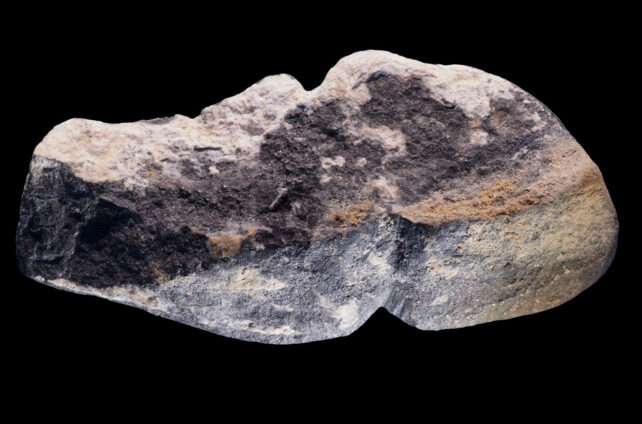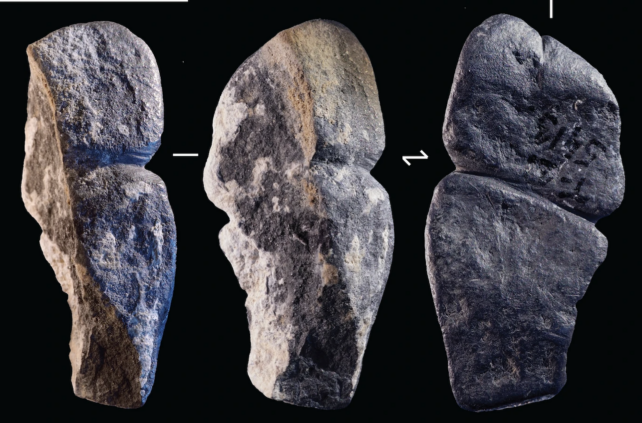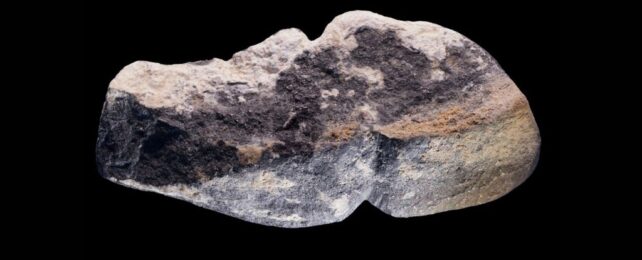Humans might have been wearing phallic ornaments thousands of years before the Romans and Greeks did the same for good luck.
An ancient oblong artifact made about 42,000 years ago bears a carving that looks suspiciously penis-like. Some archaeologists think it could be the earliest known phallic figurine in the world.
Though not all penis-like objects are made with genitals in mind. So not all researchers are convinced.
It's not even like the object screams 'sexual organ'. Boston University archaeologist Curtis Runnels, who was not involved in the recent study, told Science the ornament looks "rather shapeless", and at first glance, it's hard to disagree.

Blob-like or not, archaeologist Solange Rigaud from the University of Bordeaux and her colleagues say it's all in the details.
The grooved ornament, labeled T21, was originally found at an archaeological site in Mongolia in 2016. Experts have only recently dusted it off for a closer look, estimating the object's to be roughly between 39,500 and 42,200 years old, putting its creation some time in the Upper Paleolithic.
On the ornament's 4-centimeter (1.6 inch) long body are two grooves that were made from a pointy stone tool.

The deepest groove wraps around the midsection of the ornament, while the other groove runs short and deep from the top of the ornament down.
Researchers suspect the former incision was designed to depict the glans of a penis, while the latter incision was carved to look like a urethral opening.
The same features can be seen in a 20-centimeter-long stone pebble found in Germany that dates back to 28,000 years ago and is considered one of the earliest representations of male sexuality ever found. It may also have been used as a tool, possibly to knap flints.
The artifact from Mongolia is not so clearly recognizable, but if researchers are right and it is designed to look like a penis, it could be the earliest symbolic use of human genitalia found anywhere.
The 'back' side of the ornament is flattened out and so shiny and smooth, researchers think it was probably worn frequently on someone's chest, held in place by a cord wrapped around the middle groove.
"Overall, the use-wear pattern is consistent with suspension of the pendant in contact with soft material for an extended period," they write.
Why a hunter or gatherer would have worn this pendant remains unclear. From a distance, researchers say it's hard to make out the penis shape, which means it probably wasn't used as a signal.
Instead, it might have been worn for personal or spiritual reasons. In Rome, penis motifs were thought to boost fertility or ward away evil spirits.
Could that tradition be tens of thousands of years old?
The use of personal ornaments in Eurasia, like pendant shells, dates to about 45,000 years ago, but the depiction of human figures comes later in this region's archaeological record.
An ancient statue of Venus, found in Germany, for instance, depicts the full female figure from head to toe in a way that was probably also symbolic, but it is only about 35,000 to 40,000 years old.
Compared to a full-body artwork, detecting a lone penis can be tricky work, especially when a phallic-like artifact could have more than one use.
A curious-looking wooden tool described earlier this year, for instance, could be a 2,000-year-old dildo, or it could be a drop spindle used to spin fiber. Hey, maybe it was both.
There's always a possibility that the pendant found in Mongolia was shaped for purely practical purposes, but researchers maintain that based on their analysis, "the most compelling interpretation of the T21 pendant is a simplified phallic representation."
The study was published in Scientific Reports.
